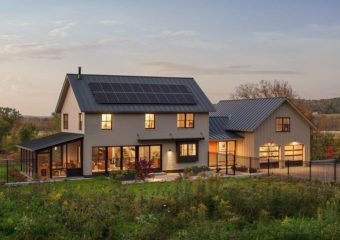Do you want to reduce your carbon footprint and protect the environment?
Even if you can’t build a green house from scratch, you can be eco-friendly with houses that already exist. Making small changes to the home environment and your behaviors can make your home more eco-friendly.
Try these tips to reduce your impact on the environment.
1. Make Repairs

Home repairs can improve efficiency and reduce energy consumption. Repairing holes and gaps around windows and doors or along the foundation are especially helpful. Those repairs let your heating and cooling system run more efficiently.
Your plumbing might also need some work to make it more eco-friendly. Fixing a leaking faucet can reduce water use by 1,661 gallons of water.
2. Reduce Your Consumption
Intentionally reducing your water and energy use saves resources. It also benefits you financially through lower bills.
You can reduce your energy use by programming your thermostat, unplugging electronics when they’re not in use, and shutting off lights when not needed. Using energy-efficient light bulbs can also help.
Use low-flow toilets and shower heads to minimize water use. You can also use rain barrels to collect rain for watering plants and other outdoor water uses.
Lowering your consumption reduces your carbon output. Organizations such as the Climate Leadership Council are coming up with incentives to lower carbon emissions, but you can take charge of your own carbon footprint with these easy ideas.
3. Replace Older Appliances

Your appliances might be energy hogs if they haven’t been updated. It’s an investment to replace all of your appliances, but it’s a major step in making your home more eco-friendly.
Look for ENERGY STAR appliances to choose the most efficient options. When you purchase appliances, you can see the cost to operate the appliance. That gives you an idea of how much energy it consumes.
4. Use Alternative Energy
For an even bigger step toward a more eco-friendly home, consider alternative energy. Solar energy is the easiest option for residential power.
One of the biggest benefits of solar roofs is that it’s a clean, renewable energy source. Even if solar energy doesn’t supply all of your power, installing panels cuts your energy consumption.
5. Reduce Chemical Use

Not all green efforts revolve around energy and water use. The materials and products you use in your home affect your impact on the environment.
Reducing the use of toxic chemicals protects the natural environment around your home.
Avoid things such as toxic chemical pesticides and cleaners inside and outside your home. Those chemicals often end up in the water supply and can harm wildlife.
When remodeling, choose paint and finishes that are low VOC to minimize the toxic chemicals that off-gas into the air.
Reusing old building materials not only helps you achieve a reclaimed look, but it also protects the environment by reducing waste. Older building supplies have likely already off-gassed toxins, so you reduce the chemicals created during your remodel.
Being Eco-Friendly With Houses
Everyone can be eco-friendly with houses, no matter where you start. Pick out the biggest areas that can use improvement to make your home an eco-friendly haven. Explore our archives for more ideas.





